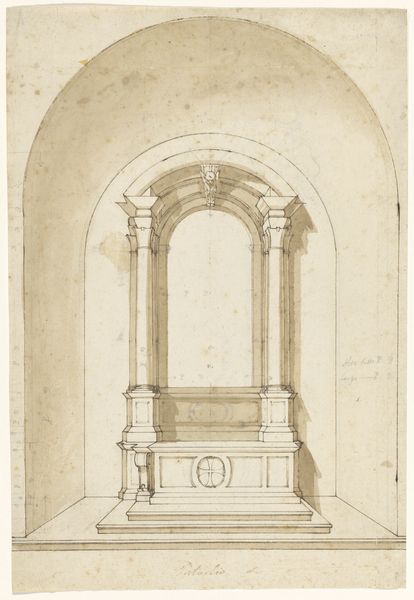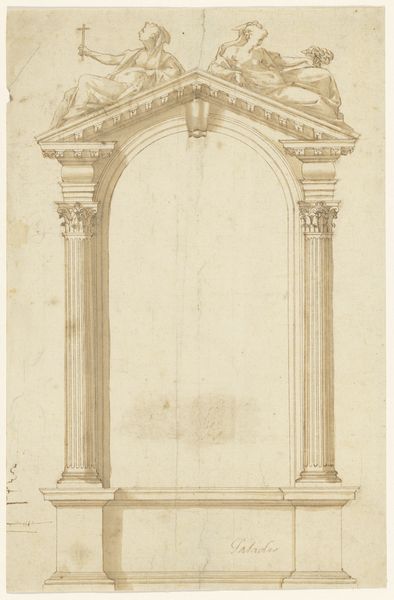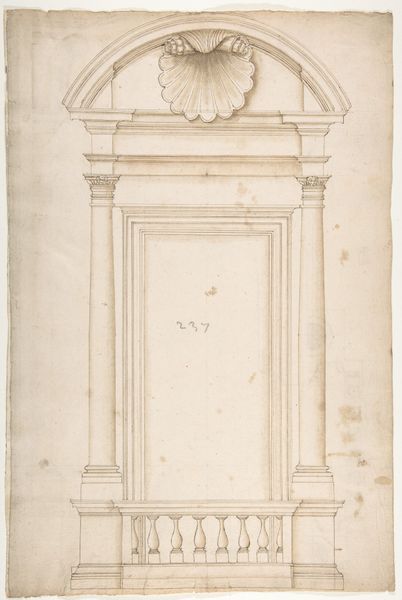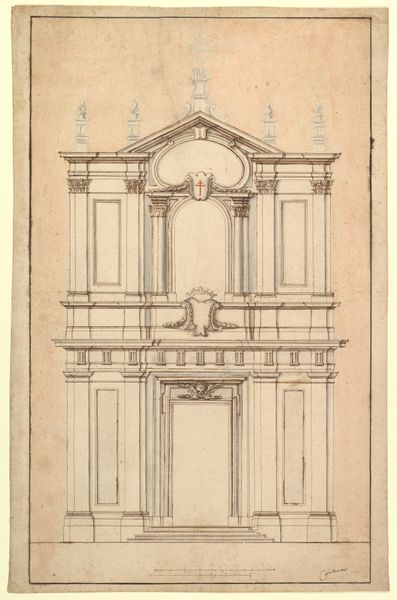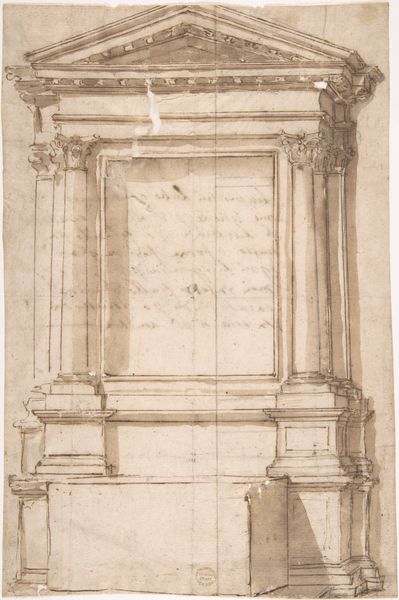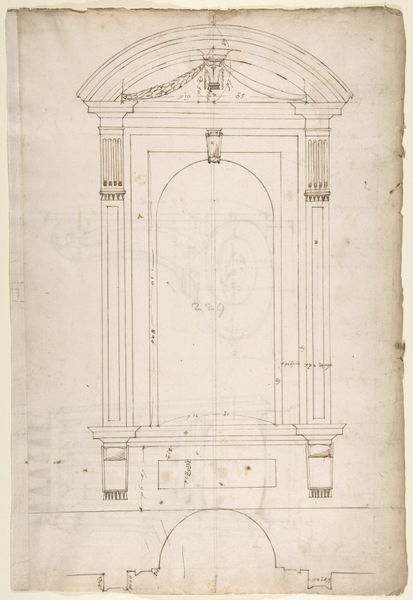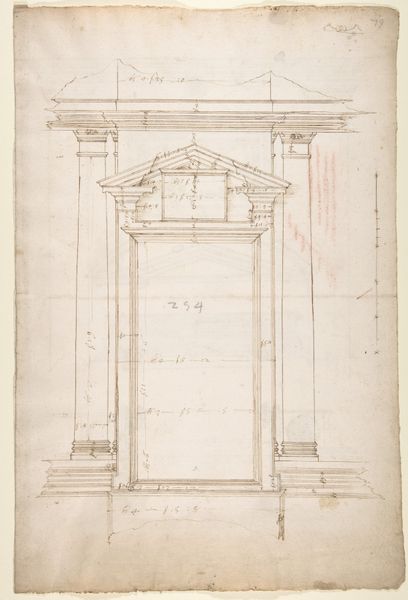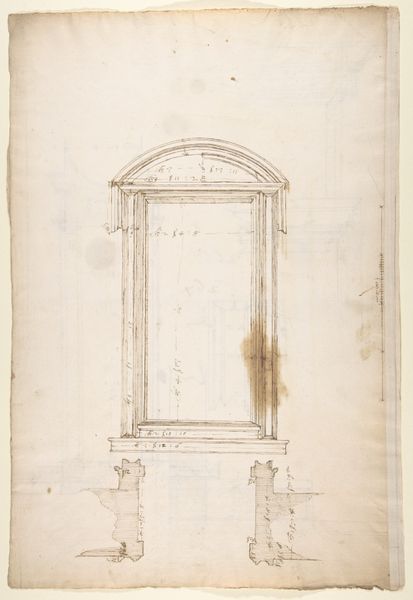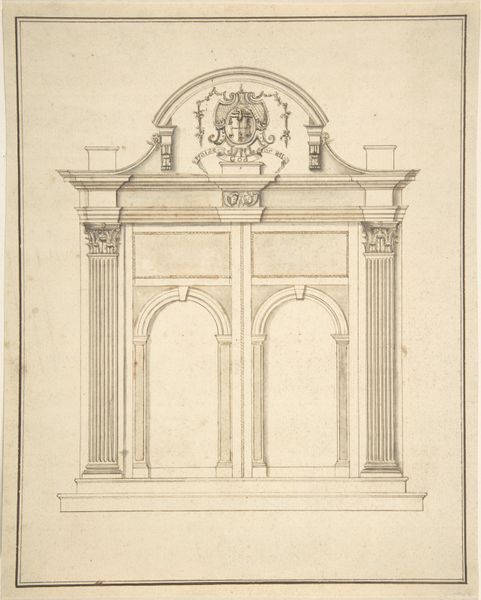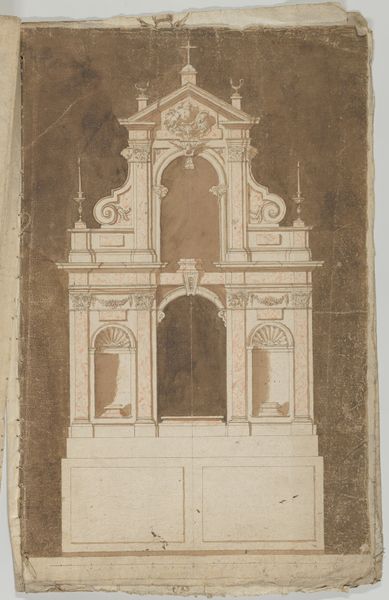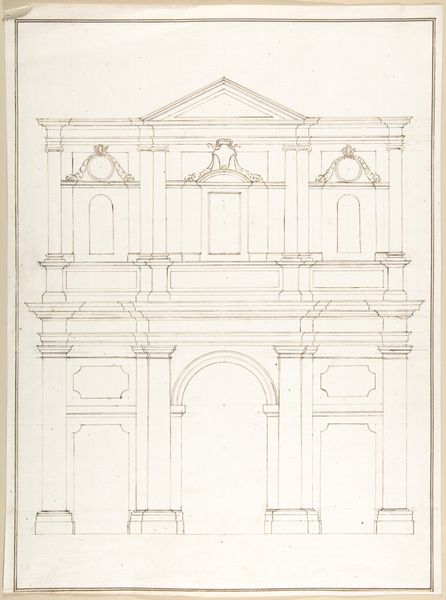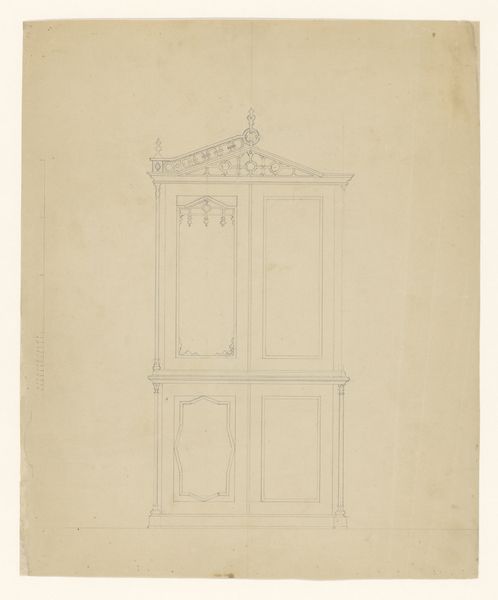
Court Cupboard (recto); Half-page of rectangles, numbered and lettered (verso) 16th century
0:00
0:00
drawing, print, architecture
#
drawing
# print
#
form
#
11_renaissance
#
italian-renaissance
#
architecture
Dimensions: sheet: 17 1/4 x 11 in. (43.8 x 27.9 cm)
Copyright: Public Domain
Editor: Here we have a 16th-century drawing and print by an anonymous artist called "Court Cupboard." It resides at the Metropolitan Museum of Art. It is, ostensibly, a diagram of the titular piece of furniture, all done with straight lines, clean shapes, and a fair bit of repetition. The overall feel is one of balanced solidity, though also static because of the lack of perspective and color. What do you make of it? Curator: The piece is indeed intriguing from a Formalist perspective. The composition relies heavily on geometric precision. Consider the interplay between the rectangular panels and the semi-circular arches. Do you see how the artist establishes a visual rhythm through the calculated repetition and variation of these forms? Editor: Yes, it does feel like the squares and rectangles anchor it, and then the arches add some gentle contrast. Curator: Precisely. Note also the proportional relationships between the different sections. The artist employs classical architectural principles, evident in the columns and entablature, creating a sense of harmonious balance. Observe how the artist organizes positive and negative space, and how the light is captured by the lines. The texture becomes almost sculptural. How does that structural solidity influence your viewing experience? Editor: I think I agree with my original feeling. It’s stable but inert. Everything is so… ordered. Does the structure allow for individual expression? Curator: Consider, perhaps, that order *is* the expression here. The very lack of ornamentation becomes a statement, focusing attention on the underlying structure. This resonates with Renaissance ideals, embracing rationality and measured beauty. Editor: I see your point! Thinking about the bare lines and shapes as a choice, not a limitation, changes the way I appreciate it. Thanks! Curator: My pleasure. The formal language opens up new avenues for appreciating the conceptual underpinnings of this intriguing diagram.
Comments
No comments
Be the first to comment and join the conversation on the ultimate creative platform.
